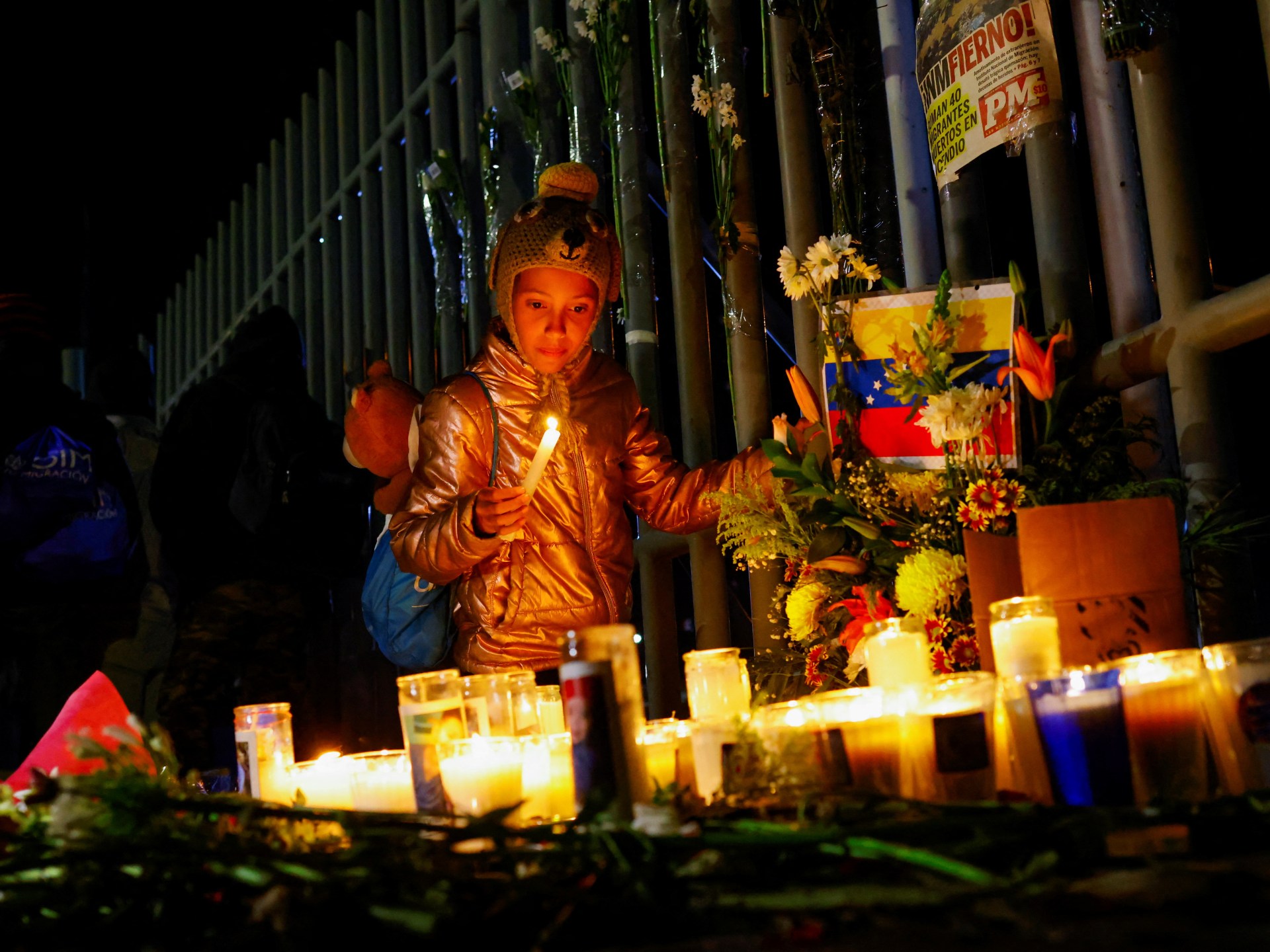The Ciudad Juárez fire – and other circles of made-in-USA hell
On March 27, 40 men were killed in a fire at a migrant detention centre in Ciudad Juárez, Mexico, just across the border from El Paso, Texas. The victims hailed from Colombia, Ecuador, El Salvador, Guatemala, Honduras, and Venezuela.
Like so many thousands of refuge seekers from around the world, they had been jailed in Mexico for the crime of aspiring to a better life in the United States – which forces its southern neighbour to act as deputy gatekeeper and migrant antagonist.
I arrived in Ciudad Juárez 10 days after the fire. An altar with candles, flowers, and portraits of the deceased had been erected in front of the detention centre’s charred façade. There I spoke with a young Venezuelan man who had lost a friend in the blaze and who had since been camping out in the cold next to the shrine.
Pulling out his battered phone, he showed me a TikTok tribute to his friend – a man with a big smile and a little son in Venezuela – as well as a series of photos of a pigeon who had recently come to pay respects at the altar. The images of the bird prompted a tender reflection from my interlocutor: “They are such delicate creatures.”
According to the official narrative, the blame for the Ciudad Juárez fire lies first and foremost with the individual detainees who set fire to their mattresses in the hopes of being freed – a seemingly reckless act, perhaps, if one fails to consider that these people were already inhabiting a form of hell even prior to the addition of literal flames.
Having been briefly imprisoned myself in a migrant detention centre in Mexico – where many folks are kept in indefinite limbo that amounts to psychological torture – I can attest to the landscape of utter despair, as well as to the lack of proper food and water cited by numerous Ciudad Juárez detainees.
At one point during my stay in the notorious Siglo XXI prison in the southern Mexican state of Chiapas – Juárez’s opposing end in terms of Mexico’s field of US border-enforcement duty – not a drop of potable water was available for the hundreds of us detained in the women’s section. Only after protracted negotiations with the policewoman guarding the metal door of the holding pen was I permitted to pass through it long enough to hoist a 20-litre container of water onto my hip and cart it back inside.
At times, though, desperation can be flammable. And in Ciudad Juárez, the blame for the detention centre fire ultimately extends far beyond even the security guards and Mexican immigration authorities who spontaneously decided that it was preferable to just let everyone die instead of opening the cell doors.
At the end of the day, it was a made-in-USA inferno, and not only because the US obligates Mexico to perform its anti-migration dirty work – a function Mexican President Andrés Manuel López Obrador has wholeheartedly embraced even while pretending to somehow be defying the US government.
Washington has long specialised in inflicting diabolical torment on the rest of the world, whether in the form of bombing campaigns, economic disaster, support for right-wing regimes and death squads – or any combination of the above, as Central and South Americans should well know.
Indeed, it is this very history that fuels a significant portion of US-bound migration in the first place.
And while the Ciudad Juárez fire quite explicitly evokes the underworld, the whole business of seeking asylum in the US is pretty hellish.
I travelled to Ciudad Juárez on April 6 to reunite with a group of young Colombian and Venezuelan men I had met in February in Panama when they emerged from the corpse-strewn stretch of jungle known as the Darién Gap – frequently referred to in Spanish as el infierno verde, or “the green hell”.
We had remained in constant touch via WhatsApp for more than a month as they navigated the rest of Central America and Mexico, being continuously detained, extorted, and robbed – all par for the course in the search for refuge. And yet they still maintained a grace and composure far beyond my own capacities, as evidenced in the plethora of WhatsApp messages imploring me to stop freaking out on their behalf as it was bad for my health.
We agreed to meet in Ciudad Juárez, which they reached after travelling for four days atop the so-called “train of death” and which I reached after a two-hour flight from Mexico City – such being the privilege of possessing a passport from the very country my friends were risking their lives to reach.
In reality, their own version of the “American dream” entailed not so much owning a fancy car or house but rather working 24 hours a day, if possible, in order to send money to their families back home.
Given the US track record of wreaking havoc in both Colombia and Venezuela, it would seem not too much to ask.
Our Ciudad Juárez reunion consisted of consuming a lot of beer, dancing to Colombian music, and partaking in the sort of hugs that make you think there might actually be a point to existence.
Although my friends had repeatedly attempted to apply for legal entry to the US – via the obligatory CBP One app, which is more or less intentionally completely dysfunctional – their general lack of funds and other factors compelled them to stage an “illegal” border crossing to El Paso on April 8.
That night, I received the news via WhatsApp: “Mom, they detained us” – the “they” of course being US immigration personnel.
And as the US continues creating far more circles of hell than Dante Alighieri could ever have imagined, at least there are still pigeons.
The views expressed in this article are the author’s own and do not necessarily reflect Al Jazeera’s editorial stance.




